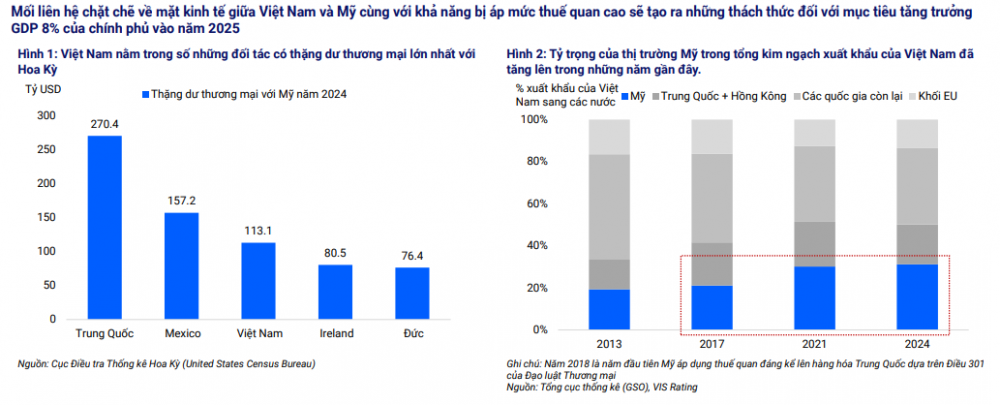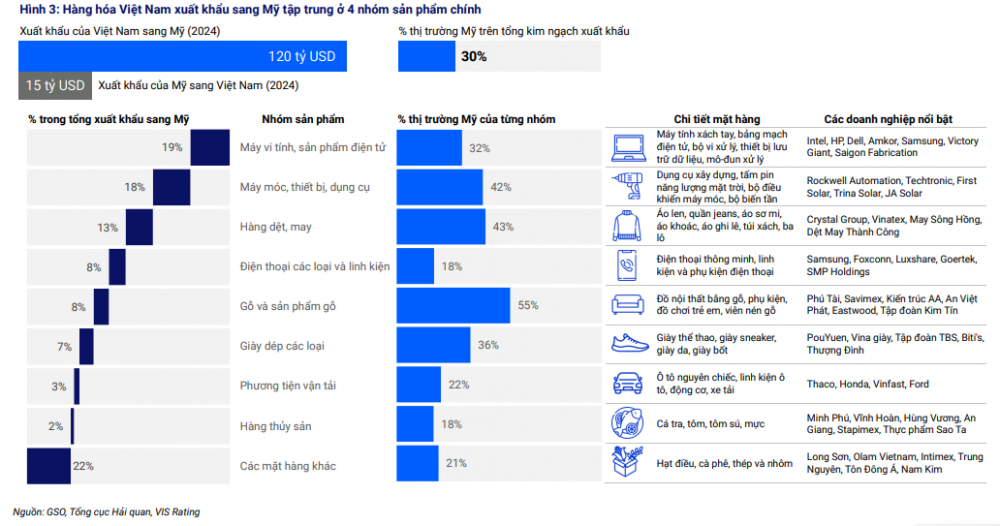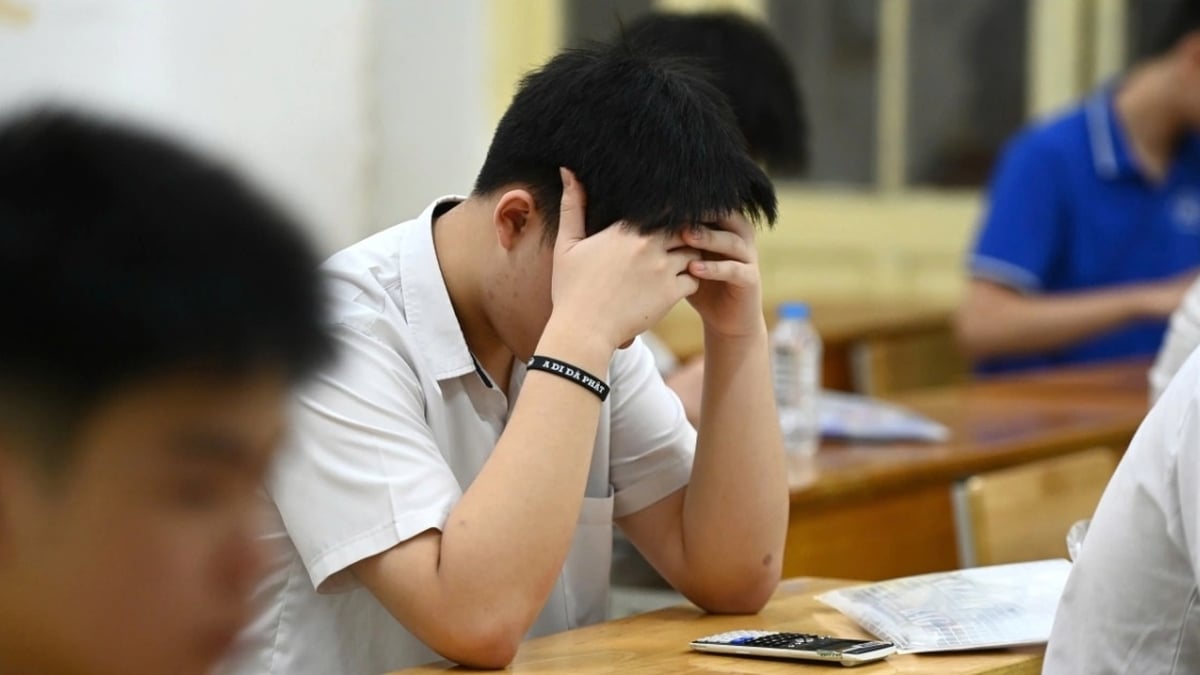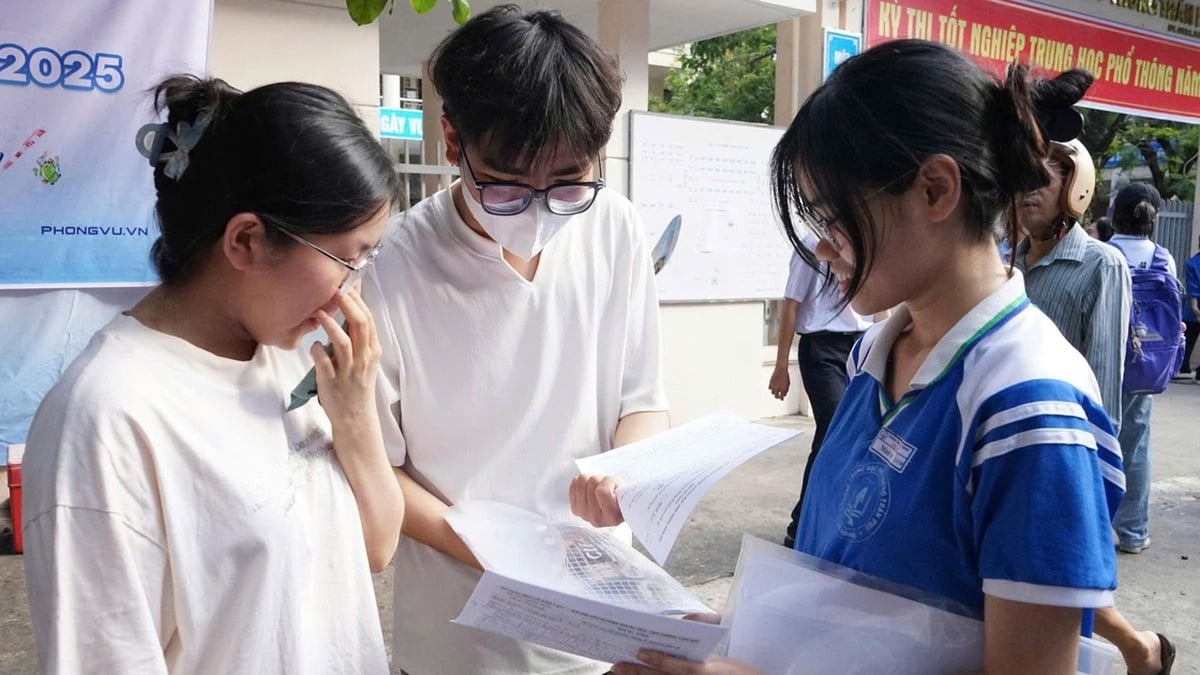 |
| Vietnam is one of the countries with a large trade surplus with the US. |
Vietnam is one of the countries with a large trade surplus with the US. Meanwhile, the US government has announced that it will apply reciprocal tariffs based on its “America First” policy. So far, the US has put Canada, China and Mexico, as well as some industries such as automobiles, aluminum and steel, into the list of subjects subject to higher import tariffs.
Like the countries mentioned above, Vietnam’s trade surplus with the US has increased significantly over the past decade, due to a sharp increase in Vietnam’s exports to the US. The US is currently Vietnam’s largest export destination, accounting for nearly 30% of Vietnam’s total export turnover in 2024.
Over the years, Vietnam has benefited from foreign investment flows and shifts in global supply chains to become an important manufacturing hub for many multinational corporations, thereby enhancing its export capacity.
If Vietnam is subject to additional tariffs, VIS Rating believes that the main industries that will be affected and most vulnerable are electronics, machinery and equipment, textiles, footwear and wooden products. These industries account for the majority of exports to the US, and many businesses have a high proportion of export revenue dependent on this market.
However, VIS Ratings expects the impact to be differentiated across sectors and companies. Multinational companies that manufacture electronics and machinery in Vietnam are better able to respond to tariffs by shifting some of their production or finished goods to other countries. But domestic manufacturers of textiles, footwear and furniture may have fewer options to shift and find alternative markets.
Businesses that rely heavily on export sales will face higher costs, fewer orders and poorer operating cash flow. Among domestic textile and garment manufacturers, Song Hong Garment Company (MSH) has 80% of its export revenue from the US market, TNG (TNG) 46%, Vietnam National Textile and Garment Group (VGT) 35%, Thanh Cong Textile and Garment (TCM) 25%.
Savimex (SAV) - a large furniture manufacturer, has 50% of its export revenue going to the US market.
Over the past few weeks, representatives of the Vietnamese and US governments have met several times to negotiate new trade measures and policy adjustments to deal with potential tariff risks. In addition to reducing import tariffs on US goods, the Vietnamese government has approved new agreements that allow US corporations to operate in Vietnam. For example, the US-based SpaceX has received approval to test its Starlink satellite internet service in Vietnam.
These measures should, in theory, help boost imports of US goods and reduce Vietnam’s trade surplus with the US over time. But VIS Ratings said that it is the ongoing and upcoming negotiations between the two governments that will determine the extent of the new US tariff policy and how long it will be in place.
Total export turnover is equivalent to 85% of Vietnam's GDP in 2024, so exports are the main driver of economic growth. Higher tariffs on Vietnamese exports to the US will push up prices for American consumers and reduce demand and sales of Vietnamese products in this market.
The slowdown in export industries will affect domestic consumption, as export businesses employ up to 30% of Vietnam’s workforce. Increased trade restrictions will also affect Vietnam’s ability to attract future investment flows and reduce the country’s prospects of achieving its 8% GDP growth target by 2025.
Source: https://thoibaonganhang.vn/thue-quan-cao-hon-cua-my-se-tac-dong-nhieu-chieu-den-viet-nam-162007.html


































































































Comment (0)